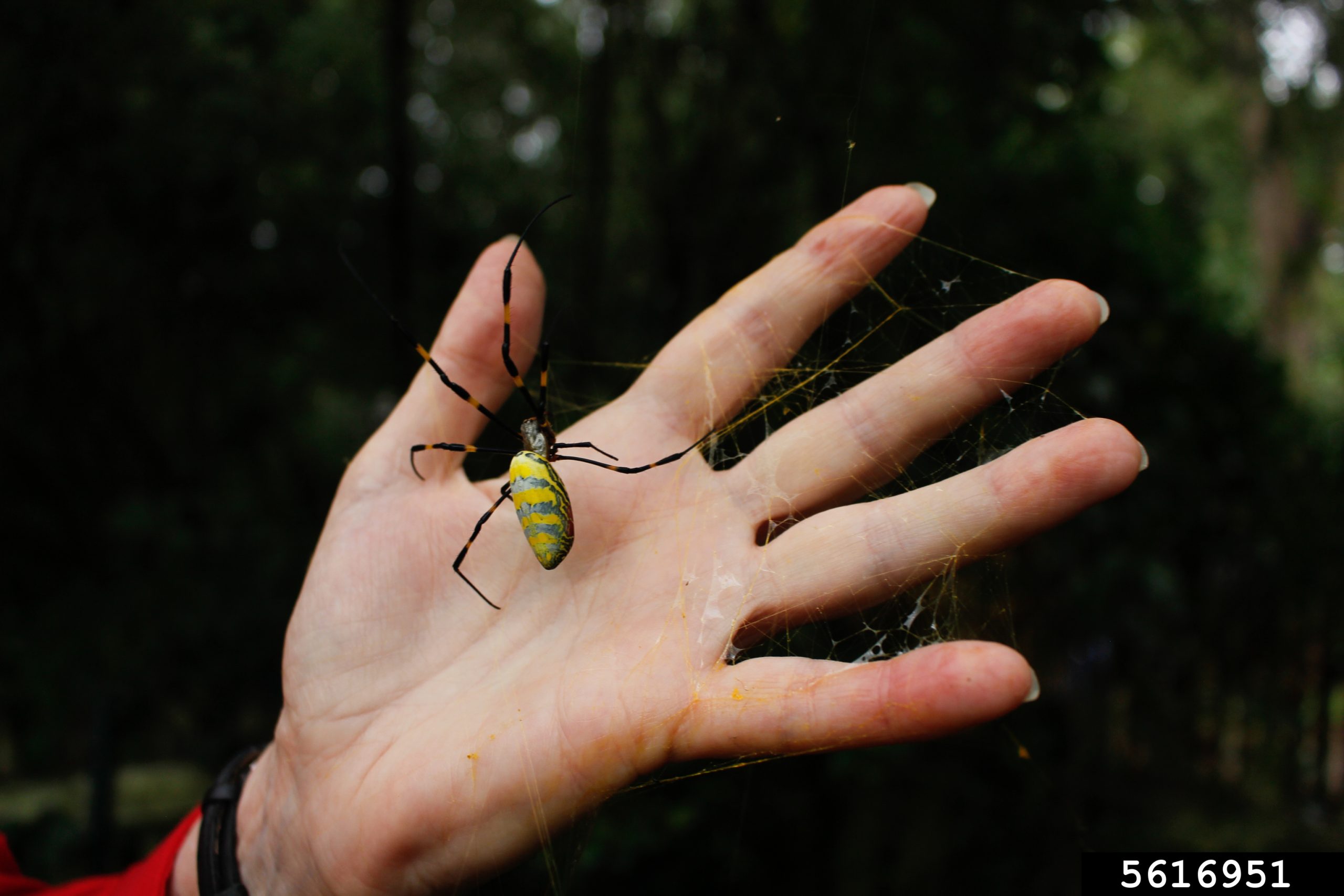
What is a Joro Spider?
Joro spiders (Trichonephila clavata) are large orb-weaver spiders native to Asia and introduced to the US in 2014. They are most often seen in September to October when they build large golden webs. As with many spiders, the female and male spiders look very different.
Adult female bodies are up to 1.25 inches long. Their abdomen is yellow with broad blue-green bands on the back (dorsal) side and yellow and red markings on the ventral (belly) side. They legs are long and black, often with yellow bands. Rarely the legs are all black.
Adult males are small, approximately 0.25 inches long and brown. Their abdomen is an enlogate oval with two long, yellow-ish stripes on both sides and a dark brown stripe in the middle. The cephalothorax (fused body part containing the head and thorax) is light brown with two long, dark brown stripes on both sides.
Egg sacs are laid mid-October through November and contain 400-500 eggs. They are in dense white silk sacs attached to leaves, tree bark, and flat structures.
The impacts of the Joro spider are unknown and are currently being researched. They do not pose a danger to humans or animals and tend to keep to themselves. You can remove them and their webs from unwanted locations if it is safe to do so. Currently, populations exist mostly in central/northern Georgia with some reports of the species presence in North Carolina, South Carolina, Tennessee and Maryland.
